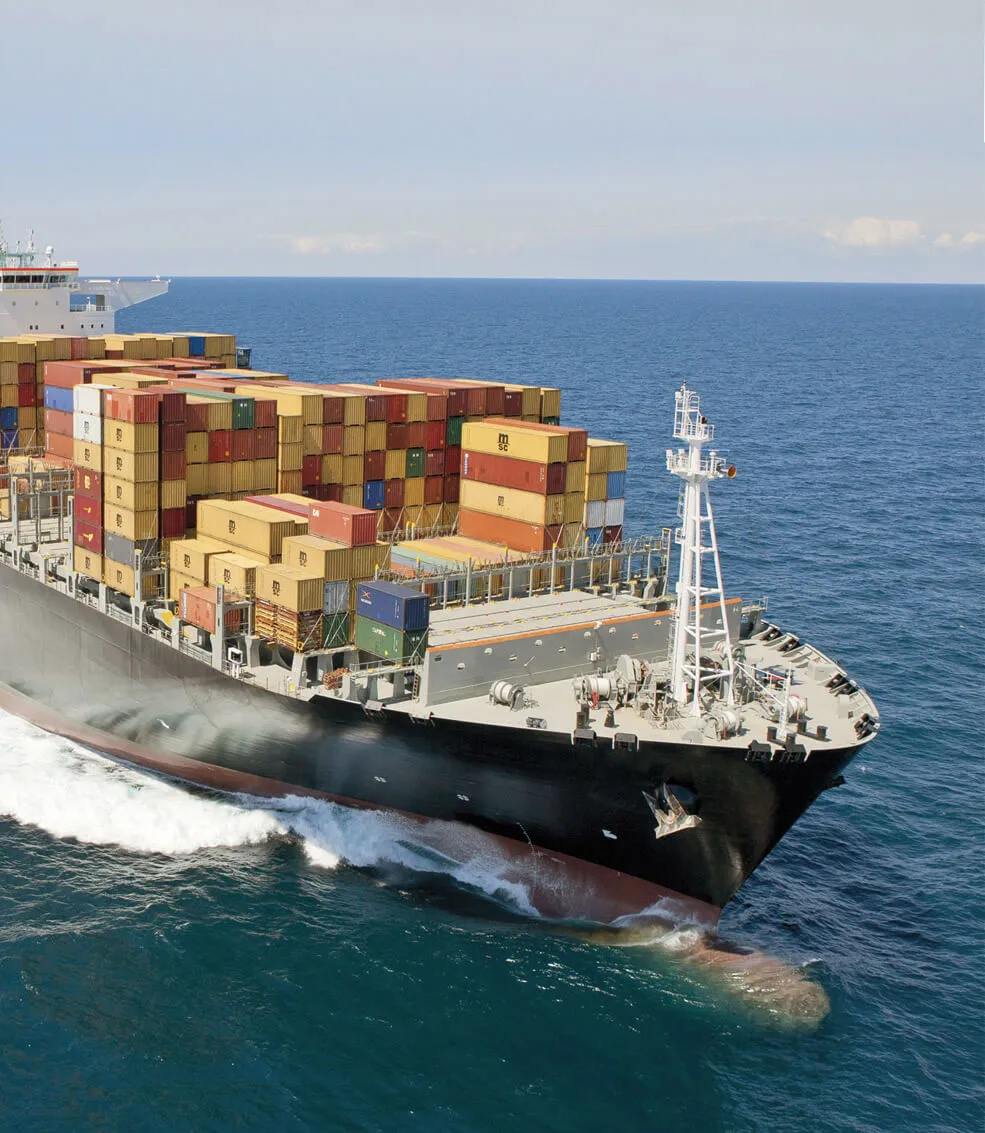ERS: Managing emergencies, preventing disasters
Emergency response services, or ERS, are on hand to help owners minimize risk in the first, critical hours after an incident. But sometimes, as MSC found out after an incident involving one of their vessels, the benefits of working with real ERS experts can extend long after the emergency has passed.
In 2016, a 14,000 TEU MSC containership was involved in a ship collision in the Singapore Straits. While the impact did not result in any environmental damage or injury to the crews of either vessel, it did cause severe damage to the aft section of the MSC ship, raising questions about hull integrity.
Within hours of the incident, DNV GL’s ERS team was contacted to provide support. According to Christoph Peickert, Head of Section, Emergency Response Service, the ERS team pulled up the design of the vessels to begin stability calculations to determine if the vessel was seaworthy. “Working closely with MSC’s crisis management team in Sorrento Italy, local maritime authorities, and the crew onboard the vessel, we were able to determine that because the damage to the vessel occurred above the waterline and the vessel’s propulsion systems remained intact, salvage and towing operations were not necessary.”

Providing support
With the immediate threat contained, the next challenge was to get the vessel safely to a repair yard. “While there are several good repair yards in the area, MSC found a slot at a yard in China,” he says. “We were tasked to assess the vessel’s ability to navigate safely to their selected yard, about a two-week sail from the Straits.”
Peickert says that in addition to calculating the damaged vessel’s residual strength, defining load conditions, setting wind and wave height limitations and contingency plans in the event of extreme weather events, the ERS team had to prepare a report to obtain permission from the flag administration to allow the damaged vessel to sail. “Flag states have their own rules about safe sailing conditions so we had to make a strong case to convince them to make an exception for this vessel, which had a breach in the hull,” The DNV GL internal coordination was supervised by Matthias Galle, Head of Department, Technical Support Germany. “Thanks to our in-house expertise, we were able to work quickly and secure their approval for the voyage.”

Watching the weather
Over the two-week transit period, the ERS team worked closely with MSC to monitor weather conditions and communicate potential risks to the crew. “While the route of the vessel did pass through areas known for challenging weather conditions, the voyage was completed without incident, thanks in part to good communication with the highly professional MSC crew,” he says. “MSC’s senior management has participated in DNV GL crisis management training and the company has registered is entire fleet with the ERS, so we have enjoyed a good working relationship with them for many years.”
According to MSC’s Technical Director, Aniello Mastellone, getting the vessel to China made a big difference. “DNV GL’s technical expertise were critical to win the trust of the flag state and their 24/7 support during the transit time ensured a safe voyage,” he says. “Thanks to DNV GL, we not only got to use our selected yard but the two-week transit time allowed for preparations in well in advance, saving MSC time and money.”

Experienced team
Peickert says that while the MSC case was uncommon, it was not exceptional. “Between our offices in Hamburg and Oslo, DNV GL’s ERS team handle about 40 cases a year,” he explains. “While groundings are the most common, we also handle cases related to fires and collisions. Our first priority is to assess the situation and support the client as best we can to minimise potential risks to personnel, property and the environment.”
Because first hours following an incident are the most critical, the ERS team works to provide owners with actionable information within two hours from first contact. Once the condition of the vessel is verified and immediate threats have been managed, priorities change. “We have a lot of experience coordinating with salvage and towing companies, local maritime and port authorities, flag states, insurers and other stakeholders so can provide ‘best in class’ decision support,” says Peickert. “Wherever possible, we try to determine the safest, most cost-effective way to proceed.”

Decision support
For example, DNV GL’s ERS has helped owners re-float grounded vessels without using salvage or towing companies and recently, provided another owner with the necessary technical support and documentation to enable a damaged container vessel to continue cargo operations for container in- and outtake on the way to a repair yard.
“As an independent organisation known for our technical expertise, DNV GL is in an excellent position to not only help owners minimise safety and environmental risk at the time of the incident, but help minimise financial risk related to cargo, salvage operations, repairs and insurance claims,” he says. “ERS advice applies from the moment the incident occurs to when the vessel is safely in a repair yard.”
Contact us

